#java.net
Explore tagged Tumblr posts
Text

🛑 Placement Assistance Program 🛑 👉 Join our JAVA & .NET Training! 📅 New Batch: 20th Feb 2025 ⏰ Time: 11:00 AM - 01:00 PM 📍 Mode: Classroom / Online ✅ What You'll Learn:
Core Java, Advanced Java, Oracle
C# .NET, ASP.NET, MVC Core
HTML | CSS | JS, Angular 15
Data Structures, Algorithms, Soft Skills, CRT
🎯 Why Join? ✔️ Expert Instructors ✔️ Hands-on Learning ✔️ Placement Assistance
👉 Register Now: https://t.ly/bN-TR 📞 Contact: +91-9000225725 | [email protected]
Follow us for more updates: 📸 Instagram: @nareshitech
#java#java.net#software#coding#programming#javaprogramming#developer#backend#java training#placement
0 notes
Text
How to Master Java Fast: A Hands-On Approach
Java is a powerful and versatile programming language used in web development, mobile applications, and enterprise solutions. Whether you're a beginner or looking to refine your skills, mastering Java quickly requires a structured, hands-on approach. Instead of just reading theory, practicing real-world coding scenarios is the key to accelerating your learning. Enrolling in a Java Training in Bangalore significantly enhances one’s ability to leverage Java’s capabilities effectively.

This guide will walk you through an effective roadmap to mastering Java fast.
Set Up Your Java Development Environment
Before diving into coding, ensure you have the right tools in place. Install the Java Development Kit (JDK), which is essential for compiling and running Java programs. Choose an Integrated Development Environment (IDE) like IntelliJ IDEA, Eclipse, or NetBeans to make coding more efficient with features like code suggestions and debugging tools. Setting up your environment correctly will allow you to focus on learning rather than troubleshooting installation issues.
Master Java Fundamentals First
A strong foundation in Java’s basics is crucial before moving to advanced topics. Start by understanding variables and data types, including integers, strings, and booleans. Learn about operators, such as arithmetic, relational, and logical operators, and how they help perform calculations and comparisons. Control flow structures like if-else statements, loops (for, while, do-while), and switch cases allow you to implement decision-making in your programs. Instead of just reading about these concepts, practice writing small programs to see them in action.
Adopt an Object-Oriented Programming Mindset
Java is built on the principles of object-oriented programming, which makes your code reusable and scalable. Focus on four key concepts:
Classes and objects form the foundation of Java programming.
Encapsulation protects data using access modifiers.
Inheritance enables code reuse by allowing one class to inherit from another.
Polymorphism allows one interface to be used for multiple implementations.
Create real-world projects using object-oriented principles, such as a student management system or an inventory management tool, to reinforce these concepts. It’s simpler to master this tool and progress your profession with the help of Best Online Training & Placement Programs, which provide thorough instruction and job placement support to anyone seeking to improve their talents.
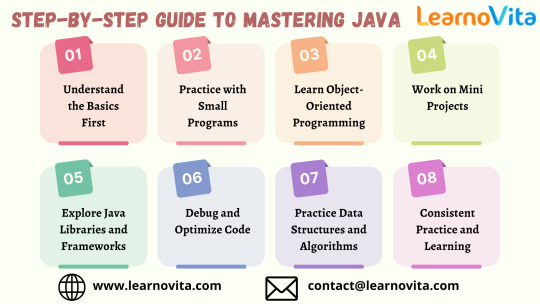
Work on Real-Life Java Projects
The fastest way to learn Java is by building projects that mimic real-world applications. Start small, then progress to more complex applications. Some project ideas include:
A to-do list application that uses basic input/output and file handling.
A banking system that implements object-oriented concepts like classes and inheritance.
A weather app that fetches real-time weather data using APIs.
A chat application that introduces networking in Java.
By applying concepts in practical scenarios, you’ll gain confidence and a deeper understanding of Java programming.
Get Comfortable with Java Libraries and APIs
Java offers a wide range of built-in libraries that simplify development. Some of the most important ones include:
java.util contains data structures like lists, sets, and maps.
java.io handles file input and output operations.
java.net manages network programming tasks.
java.sql helps interact with databases using JDBC.
Mastering these libraries will make coding more efficient and allow you to build powerful applications.
Understand Exception Handling and Debugging
Errors are inevitable when coding, but Java’s exception-handling mechanism ensures smooth program execution. Learn how to use try-catch blocks to handle errors gracefully. The finally block ensures critical code runs regardless of exceptions. Debugging is another essential skill—practice using debugging tools in your IDE to identify and fix issues efficiently.
Explore Java Frameworks for Faster Development
Once you're comfortable with core Java, learning frameworks can speed up development. Some of the most widely used Java frameworks include:
Spring Boot for building enterprise-level applications.
Hibernate simplifies database interactions with object-relational mapping.
Apache Maven manages project dependencies and builds.
JUnit is used for testing Java applications.
Exploring these frameworks will make you job-ready and improve your efficiency as a Java developer.
Practice Coding Daily and Solve Challenges
The best way to master Java quickly is to code every day. Solve Java coding challenges on platforms like LeetCode, HackerRank, and CodeChef. These platforms offer algorithm-based problems that sharpen problem-solving skills. Additionally, contributing to open-source projects on GitHub can help you gain real-world experience.
Join Java Communities and Seek Mentorship
Engaging with Java communities can provide invaluable learning opportunities. Join forums like Stack Overflow, Java Reddit, and GitHub Discussions to ask questions and learn from experienced developers. If possible, find a mentor who can guide you through challenging concepts and best coding practices.
Final Thoughts
Mastering Java quickly requires a hands-on, structured approach. By setting up your environment, focusing on core concepts, building projects, and practicing regularly, you can accelerate your learning journey. Remember, consistency is key—keep coding, keep exploring, and soon you'll be a confident Java developer ready to take on exciting projects!
0 notes
Text
Price: [price_with_discount] (as of [price_update_date] - Details) [ad_1] 1.Java Networking Network Basics and Socket overview, TCP/IP client sockets, URL, TCP/IP server sockets, Datagrams, java.net package Socket, ServerSocket, InetAddress, URL, URLConnection. (Chapter - 1) 2.JDBC Programming The JDBC Connectivity Model, Database Programming : Connecting to the Database, Creating a SQL Query, Getting the Results, Updating Database Data, Error Checking and the SQLException Class, The SQLWarning Class, The Statement Interface, PreparedStatement, CallableStatement The ResultSet Interface, Updatable Result Sets, JDBC Types, Executing SQL Queries, ResultSetMetaData, Executing SQL Updates, Transaction Management. (Chapter - 2) 3.Servlet API and Overview Servlet Model : Overview of Servlet, Servlet Life Cycle, HTTP Methods Structure and Deployment descriptor ServletContext and ServletConfig interface, Attributes in Servlet, Request Dispacher interface. The Filter API: Filter, FilterChain, Filter Config Cookies and Session Management : Understanding state and session, Understanding Session Timeout and Session Tracking, URL Rewriting. (Chapter - 3) 4.Java Server Pages JSP Overview: The Problem with Servlets, Life Cycle of JSP Page, JSP Processing, JSP Application Design with MVC, Setting Up the JSP Environment, JSP Directives, JSP Action, JSP Implicit Objects JSP Form Processing, JSP Session and Cookies Handling, JSP Session Tracking JSP Database Access, JSP Standard Tag Libraries, JSP Custom Tag, JSP Expression Language, JSP Exception Handling, JSP XML Processing. (Chapter - 4) 5.Java Server Faces 2.0 Introduction to JSF, JSF request processing Life cycle, JSF Expression Language, JSF Standard Component, JSF Facelets Tag, JSF Convertor Tag, JSF Validation Tag, JSF Event Handling and Database Access, JSF Libraries : PrimeFaces. (Chapter - 5) 6.Hibernate 4.0 Overview of Hibernate, Hibernate Architecture, Hibernate Mapping Types, Hibernate O/R Mapping, Hibernate Annotation, Hibernate Query Language. (Chapter - 6) 7.Java Web Frameworks . Publisher : Technical Publications; First Edition (1 January 2021) Language : English Paperback : 392 pages ISBN-10 : 9333221638 ISBN-13 : 978-9333221634 Item Weight : 520 g Dimensions : 24 x 18.3 x 1.5 cm Country of Origin : India Generic Name : Books [ad_2]
0 notes
Text
What can Java programming do?
Java is a versatile and powerful programming language that can be used to develop a wide range of applications. Here's what Java can do:
1. Web Development
Server-Side Development: Java is widely used for backend development. Frameworks like Spring, Hibernate, and Struts allow developers to create robust web applications.
Servlets and JSP: Java Servlets and JavaServer Pages (JSP) are used for building dynamic web content.
2. Mobile Development
Android Apps: Java is the primary language for Android app development. It powers a vast majority of Android apps and provides access to Android's APIs and features.
3. Desktop Applications
Cross-Platform Applications: Java's Swing and JavaFX libraries enable developers to build graphical user interfaces (GUIs) that can run on any platform with a Java Virtual Machine (JVM).
Enterprise Applications: Java is often used in building enterprise-level applications, thanks to its scalability and security features.
4. Big Data Technologies
Hadoop: Java is the backbone of Apache Hadoop, a framework used for processing and storing massive amounts of data.
Apache Kafka and Spark: These big data processing tools also use Java, allowing for the real-time processing of data.
5. Game Development
Game Engines: While Java is not as popular as some other languages for game development, it is still used in game engines like jMonkeyEngine to develop 2D and 3D games.
6. Cloud Computing
Cloud-Native Applications: Java is commonly used in building cloud-based applications and services, leveraging cloud platforms like AWS, Google Cloud, and Microsoft Azure.
7. Scientific Applications
Simulations and Modeling: Java's robustness makes it suitable for developing scientific applications that require precise calculations, simulations, or modeling.
Bioinformatics: Java is used in bioinformatics for data analysis and visualization.
8. Internet of Things (IoT)
Embedded Systems: Java can be used to develop software for embedded systems, which are often part of IoT devices.
IoT Applications: Java supports the development of IoT applications with its libraries and frameworks.
9. Enterprise-Level Applications
Banking Systems: Java is heavily used in the financial services industry for creating secure, high-performance applications.
Enterprise Resource Planning (ERP): Java is used in building ERP systems that manage business processes across various departments.
10. API Development
RESTful and SOAP APIs: Java is commonly used to build APIs that allow different applications to communicate with each other.
11. Artificial Intelligence and Machine Learning
Libraries and Frameworks: Java has libraries like Weka, Deeplearning4j, and MOA that can be used to build AI and machine learning applications.
12. Networking
Network Programming: Java provides extensive support for networking through its java.net package, making it suitable for developing applications that require network communication.
13. Security
Cryptography and Security Applications: Java has built-in security features and libraries that make it a popular choice for developing secure applications, including encryption and authentication services.
14. Cross-Platform Applications
Write Once, Run Anywhere: One of Java's most significant advantages is its ability to run on any device with a JVM, making it ideal for cross-platform applications.
15. Microservices
Spring Boot: Java is a go-to language for building microservices, with Spring Boot being a widely-used framework that simplifies the process of creating production-ready microservices.
16. DevOps Tools
Automation and Tools Development: Java is used in developing various DevOps tools and automation scripts, contributing to continuous integration and delivery pipelines.
In summary, Java's flexibility, portability, and vast ecosystem of libraries and frameworks make it capable of handling almost any programming task, from web and mobile development to large-scale enterprise applications and scientific computing.
java course in chennai
java courses in chenna
0 notes
Text
Importance and Role of Full-Stack Developer in Web Development
A full stack developer from best web development company is someone who can create both client-side and server-side applications. Full stack web developers are programmers that can code both the back end and the front end of a website (also you can read our article Difference between frontend, backend and full stack development on Medium).
Interacting on websites, maintaining and building databases, and developing servers for the websites to run and coding are all part of their tasks. Full stack development maintains the application’s openness and collaborate with graphic designers on web design features and a variety of other jobs.
Full stack developers are independent producers who comprehend and define the notion of coding. Full-stack developers may also employ the most popular frameworks, libraries, content management systems, and platforms. WordPress web development services may be provided by full-stack best web development company to construct professional websites or online apps.
Responsibilities of full stack developer
They are in charge of creating front-end web site planning.
They create user relationships on websites.
Creating and building website backend apps
For functionality, servers and databases are created.
Ensure that cross-platform optimization for mobile phones/tablets is in place.
Both APIs were developed and designed.
Consumer and technical requirements are met.
Maintaining trust in programming and web development languages.
What are the requirements of being a full stack developer?
A computer science degree is required.
Excellent project management and organisational abilities.
HTML, JavaScript, and CSS are all important front-end languages.
Angular JS, Amber, and react are examples of JavaScript agendas.
Ability to programme in server-side languages such as Ruby, Python, Java.NET, and PHP.
Understanding of databases such as MySQL, MongoDB, and Oracle.
The ability to communicate verbally must be excellent.
Problem-solving abilities are crucial.
Attentiveness to the smallest of details.
What do the full stack developers do?
The primary responsibility of full stack web developers is to plan and construct full stack online applications. As needed, they build computer programmes, alter existing programmes, and maintain them. Assuming a new project is in the works, these full stack developers ensure that a finished, competent software product is delivered. These full stack developers use web technologies to shape unique software outputs. They come up with ground-breaking innovations that help to rationalise industrial progress. They also assist in the maintenance of complex technological foundations and collaborate with their team to include new features and strategically plan for future goods and advancements. You can hire dedicated full stack developer for a well-developed website.
Full-Stack Developers vs. Product Engineers
There is a technical distinction between full-stack developers and product engineers. Full stack developers are focused on designing, developing, and managing new products or systems from concept to implementation to continuous improvement. Software product engineers are focused on designing, developing, and managing new products or systems from concept to implementation to continuous improvement. One can hire dedicated full stack developer for a great looking website.
DevOps Engineers vs. Full Stack Developers
The full stack development concept that these two jobs have in common is flexibility. To adapt to the changing industry, both DevOps engineers and full stack developers demand flexibility and expertise. Due of their skillsets, both get paid more and are in more demand. DevOps engineers, on the other hand, enable the CI/CD pipeline and assist firms in establishing a DevOps strategy for development and deployments. Full stack developers are well-versed in front-end and back-end programming.
What Makes Full Stack Developers So Popular?
The full stack web development services providers are in high demand. Flexibility to work with a variety of backend and frontend technologies and frameworks. This saves time and money, which is especially beneficial to small and medium-sized organisations.
Experts and specialists in one technology/tool are chosen over full stack developers in large and established enterprises with thousands of users. Due to their all-rounder and ‘jack of all crafts’ attitude, several digital companies are recruiting full stack engineers. They are more beneficial to any organisation seeking a faster time to market and more cost-effective solution.
What Is the Role of a Full Stack Developer in The Future?
Becoming a full stack developer is similar to becoming a T-Shaped developer, who not only has in-depth knowledge of a certain subject but also has a broad understanding of generic ideas. This will help them develop into all-around players who will be difficult to replace. They are collaborative, knowledgeable, and focused, all of which help to create happier, more productive teams.
Full stack web development services providers may also specify the scope of an application. For printed papers, they develop functional and technical specifications. With a limited rule of full stack developers, they may handle actual issues and manipulate numerous variables in circumstances. Full stack developers, based on their experience, can readily figure out any web development difficulty, and this is how they may work with the team. Full stack developers have the obligations and points described above, and as a result, they are an integral component of a corporation.
Conclusion
Whiz Solutions is one of the best full stack development solutions company specializations in web development exist for a purpose, and being a full stack developer does not imply being an expert in every available technology. It’s more important to find someone who is knowledgeable with and understands each layer, as well as has a true interest in all software technologies.
It’s also about being able to communicate effectively with team members and being a valuable asset when necessary. To manage and work with front-end and back-end engineers, personal interaction and communication skills are required.
Full stack developers from full stack development solutions company are familiar with all aspects of the web development process and can advise on strategy and best practises. These programmers will play an increasingly essential role in future web development because they can see the broad picture. They are familiar with both the server and client sides of the user experience.
A full stack development solutions company can work full-time or part-time in an office setting, or they can work from home. If you opt to freelance, you may have to travel. Some full stack developers opt to outsource their talents to businesses by acting as consultants or independent contractors, while others choose to outsource their skills to organisations by acting as consultants or independent contractors.
#whizsolutions#whiz solutions#full stack developer#Full Stack Software Developer#full stack#full stack development
5 notes
·
View notes
Text
Apache Httpclient Ssl
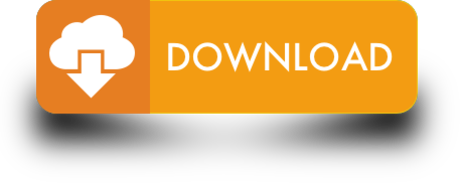
Apache Httpclient Download
Apache Httpclient Ssl File
Apache Httpclient Ssl Verification
Apache Httpclient Example
In fact Java has had its own built-in HTTP client: HttpURLConnection since JDK1.1 (even the super-class, URLConnection is already exists since JDK1.0). But I believed most of us will use HttpComponents Client from Apache, which I also used in below example.
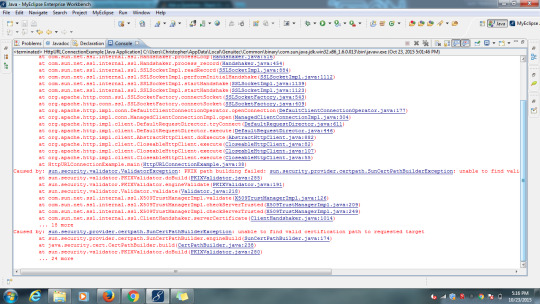
HttpClient does not come with support for SSL/TLS because it doesn't have to. Both security protocols are for the transport layer, while the HTTP protocol operates on top of the transport layer. You can mix and match HttpClient with any independent SSL/TLS implementation. Our SSL/TLS guide explains how to do this.
Apache httpclient ssl certificate authentication Apache HTTP Client: Client-Side SSL Certificate, It's not a surprise that client-side SSL certificates (also known as two-way SSL or mutual SSL authentication) is doable, but of course, being Unlimited Servers No Extra Cost. Award Winning - Quick & Easy Setup.
Basic Configuration Example. Your SSL configuration will need to contain, at minimum, the following directives. LoadModule sslmodule modules/modssl.so Listen 443 ServerName www.example.com SSLEngine on SSLCertificateFile '/path/to/www.example.com.cert' SSLCertificateKeyFile '/path/to/www.example.com.key'.
Apache Httpclient Download
The Hyper-Text Transfer Protocol (HTTP) is perhaps the most significant protocol used on the Internet today. Web services, network-enabled appliances and the growth of network computing continue to expand the role of the HTTP protocol beyond user-driven web browsers, while increasing the number of applications that require HTTP support.
Although the java.net package provides basic functionality for accessing resources via HTTP, it doesn’t provide the full flexibility or functionality needed by many applications. HttpClient seeks to fill this void by providing an efficient, up-to-date, and feature-rich package implementing the client side of the most recent HTTP standards and recommendations.
Designed for extension while providing robust support for the base HTTP protocol, HttpClient may be of interest to anyone building HTTP-aware client applications such as web browsers, web service clients, or systems that leverage or extend the HTTP protocol for distributed communication.
Documentation
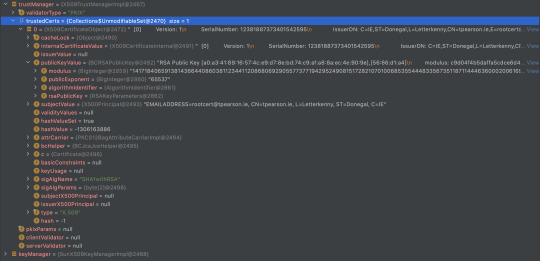
Quick Start - contains a simple, complete example of an HTTP GET and POST with parameters.
HttpClient Tutorial (PDF)
HttpClient Examples - a set of examples demonstrating some of the more complex use scenarios.
HttpClient Primer - explains the scope of HttpClient. Note that HttpClient is not a browser. It lacks the UI, HTML renderer and a JavaScript engine that a browser will possess.
Javadocs
API compatibility reports
Apache Httpclient Ssl File
Features
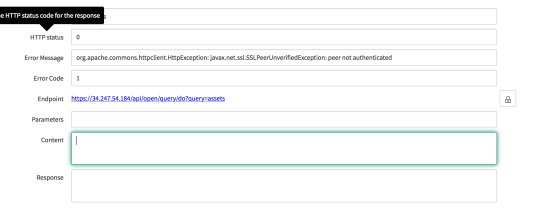
Apache Httpclient Ssl Verification
Standards based, pure Java, implementation of HTTP versions 1.0 and 1.1
Full implementation of all HTTP methods (GET, POST, PUT, DELETE, HEAD, OPTIONS, and TRACE) in an extensible OO framework.
Supports encryption with HTTPS (HTTP over SSL) protocol.
Transparent connections through HTTP proxies.
Tunneled HTTPS connections through HTTP proxies, via the CONNECT method.
Basic, Digest, NTLMv1, NTLMv2, NTLM2 Session, SNPNEGO, Kerberos authentication schemes.
Plug-in mechanism for custom authentication schemes.
Pluggable secure socket factories, making it easier to use third party solutions
Connection management support for use in multi-threaded applications. Supports setting the maximum total connections as well as the maximum connections per host. Detects and closes stale connections.
Automatic Cookie handling for reading Set-Cookie: headers from the server and sending them back out in a Cookie header when appropriate.
Plug-in mechanism for custom cookie policies.
Request output streams to avoid buffering any content body by streaming directly to the socket to the server.
Response input streams to efficiently read the response body by streaming directly from the socket to the server.
Persistent connections using KeepAlive in HTTP/1.0 and persistance in HTTP/1.1
Direct access to the response code and headers sent by the server.
The ability to set connection timeouts.
Support for HTTP/1.1 response caching.
Source code is freely available under the Apache License.
Standards Compliance
Apache Httpclient Example
HttpClient strives to conform to the following specifications endorsed by the Internet Engineering Task Force (IETF) and the internet at large:
RFC 1945 - Hypertext Transfer Protocol – HTTP/1.0
RFC 2616 - Hypertext Transfer Protocol – HTTP/1.1
RFC 2617 - HTTP Authentication: Basic and Digest Access Authentication
RFC 2396 - Uniform Resource Identifiers (URI): Generic Syntax
RFC 6265 - HTTP State Management Mechanism (Cookies)

1 note
·
View note
Text
0 notes
Text
java course information in details.
What Is Mean By Java Developer course?
Java is only a moving coding language’s since 10 years and it is a stage. Java Certification Course is an exceptionally safe, undeniable level, hearty and object situated programming language and most moving language in IT ventures for improvement. Best Java certificate Course presents in various classes and Java Preparing organization
Java was found in the earliest year 1995 by Sun Microsystems and the pioneer or father of Java is "James gosling".
Do you know old name Of Java?
First name of java was Oak however the name "oak" Currently enlisted organization name , so James and his group acquainted oak with "Java"
Do you have any idea about what are the Uses of Java Course?
According to the information given by Sun Microsystems, at present roughly three billion sudden spikes in demand for java it implies there are parcel of gadgets run on java we can gain from Java Courses and Java Engineer course A portion of the instances of java applications are given as underneath.
• It is broadly utilized in gaming’s.
• It likewise assumes crucial part in mechanical technology.
• Utilized in PC work area applications
Ex: media player, anitiviruse’s and so on.
• Utilized in web-applications.
• Utilized in Mobiles and PCs.
• Utilized in Smartcards ex: charge/Visas.
• Utilized in implanted frameworks.
What are the kinds of java applications?
The following are the primarily four kinds of uses that could be made with the assistance of Java Course.
1. Standalone application.
2. Web Application.
3. Enterprise Application.
4. Mobile Application.
We are here going to examine about additional subtleties of java applications likewise we can gained it from Java Engineer course and Best Java Preparing establishment
1. Standalone Applications: Independent applications are only a work areas applications and these applications are ordinary programming that we need to introduced on each machine for simple use and
Instances of independent applications are as per the following: chrome program, Microsoft word, Photoshop, notebook and so on.
2. Web Applications: In this section we will examine about web-uses of java. Web application is only an application that sudden spikes in demand for server side and makes a unique page known as "web-application". In IT industry spring boot, sleep, JSF, JSP and so on advancements are utilized for making web applications in Java.
3. Enterprise Applications: In this section we will examine about undertakings applications. It is broadly use in corporate areas and ventures due to exceptionally get, load adjusting and bunching, for example, in banking, finance, produce enterprises and so on.
4. Mobile Applications: Applications which are made by considering cell phones are called as portable applications. In portable application generally android and java utilized for making versatile applications.
What are the various foundation of Java Certification course :
Java Has a four distinct stages or versions referenced as beneath.
• Java SE(java standard release): It is modifying stage which incorporates Programming interface's as java.lang ,java.io,java.net,java.sql,java.math and so on it Incorporates core topics like OOP's,string,regex,exception,AWT and so forth.
• Java EE( java endeavor edition):In straightforward words Java EE is an assortment of determinations for creating and sending undertakings applications
• Java ME (java miniature release): miniature stage is devoted to versatile applications.
• JavaFx: It uses to foster rich web applications. It utilizes lightweight UI Programming interface
Do you have any idea about what the essentials for Java Certification course are?
To learn java, you should have the essential information on c/c++ programming language and for learning you can join Best Java Preparing establishment and java Preparing foundation
0 notes
Text
Introduction to the framework
Programming paradigms
From time to time, the difference in writing code using computer languages was introduced.The programming paradigm is a way to classify programming languages based on their features. For example
Functional programming
Object oriented programming.
Some computer languages support many patterns. There are two programming languages. These are non-structured programming language and structured programming language. In structured programming language are two types of category. These are block structured(functional)programming and event-driven programming language. In a non-structured programming language characteristic
earliest programming language.
A series of code.
Flow control with a GO TO statement.
Become complex as the number of lines increases as a example Basic, FORTRAN, COBOL.
Often consider program as theories of a formal logical and computations as deduction in that logical space.
Non-structured programming may greatly simplify writing parallel programs.The structured programming language characteristics are
A programming paradigm that uses statement that change a program’s state.
Structured programming focus on describing how a program operators.
The imperative mood in natural language express commands, an imperative program consist of command for the computer perform.
When considering the functional programming language and object-oriented programming language in these two languages have many differences
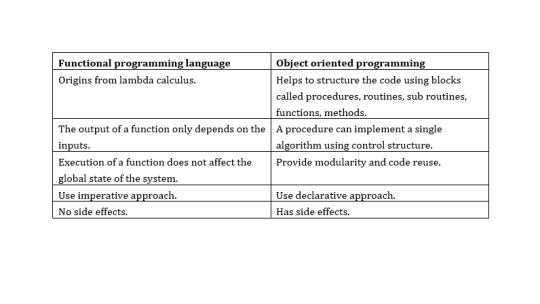
In here lambda calculus is formula in mathematical logic for expressing computation based on functional abstraction and application using variable binding and substitution. And lambda expressions is anonymous function that can use to create delegates or expression three type by using lambda expressions. Can write local function that can be passed as argument or returned as the value of function calls. A lambda expression is the most convenient way to create that delegate. Here an example of a simple lambda expression that defines the “plus one” function.
λx.x+1
And here no side effect meant in computer science, an operation, function or expression is said to have a side effect if it modifies some state variable values outside its local environment, that is to say has an observable effect besides returning a value to the invoke of the operation.Referential transparency meant oft-touted property of functional language which makes it easier to reason about the behavior of programs.
Key features of object-oriented programming
There are major features in object-oriented programming language. These are
Encapsulation - Encapsulation is one of the basic concepts in object-oriented programming. It describes the idea of bundling the data and methods that work on that data within an entity.
Inheritance - Inheritance is one of the basic categories of object-oriented programming languages. This is a mechanism where can get a class from one class to another, which can share a set of those characteristics and resources.
Polymorphous - Polymorphous is an object-oriented programming concept that refers to the ability of a variable, function, or object to take several forms.
Encapsulation - Encapsulation is to include inside a program object that requires all the resources that the object needs to do - basically, the methods and the data.
These things are refers to the creation of self-contain modules that bind processing functions to the data. These user-defined data types are called “classes” and one instance of a class is an “object”.
These things are refers to the creation of self-contain modules that bind processing functions to the data. These user-defined data types are called “classes” and one instance of a class is an “object”.
How the event-driven programming is different from other programming paradigms???
Event driven programming is a focus on the events triggered outside the system
User events
Schedulers/timers
Sensor, messages, hardware, interrupt.
Mostly related to the system with GUI where the users can interact with the GUI elements. User event listener to act when the events are triggered/fired. An internal event loop is used to identify the events and then call the necessary handler.
Software Run-time Architecture
A software architecture describes the design of the software system in terms of model components and connectors. However, architectural models can also be used on the run-time to enable the recovery of architecture and the architecture adaptation Languages can be classified according to the way they are processed and executed.
Compiled language
Scripting language
Markup language
Communication between application and OS needs additional components.The type of language used to develop application components.
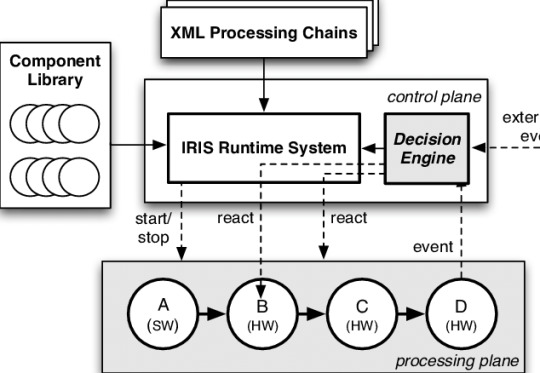
Compiled language
The compiled language is a programming language whose implementation is generally compiled, and not interpreter
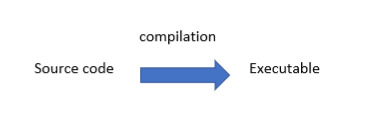
Some executions can be run directly on the OS. For example, C on windows. Some executable s use vertical run-time machines. For example, java.net.
Scripting language
A scripting or script language is a programming language that supports the script - a program written for a specific run-time environment that automates the execution of those tasks that are performed by a human operator alternately by one-by-one can go.

The source code is not compiled it is executed directly.At the time of execution, code is interpreted by run-time machine. For example PHP, JS.
Markup Language
The markup language is a computer language that uses tags to define elements within the document.

There is no execution process for the markup language.Tool which has the knowledge to understand markup language, can render output. For example, HTML, XML.Some other tools are used to run the system at different levels
Virtual machine
Containers/Dockers
Virtual machine
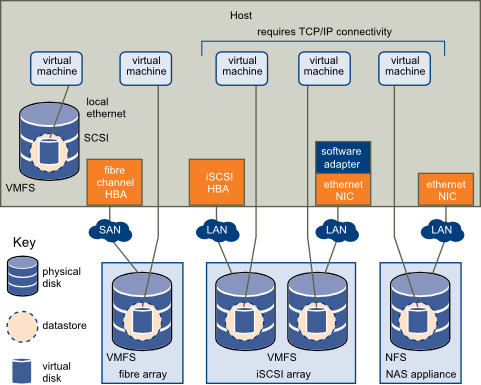
Containers
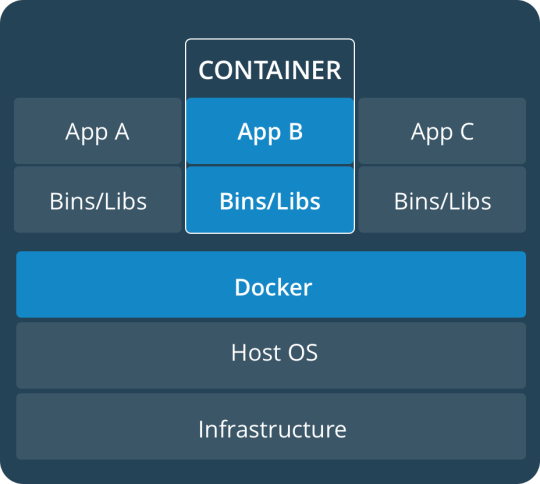
Virtual Machine Function is a function for the relation of vertical machine environments. This function enables the creation of several independent virtual machines on a physical machine which perpendicular to resources on the physical machine such as CPU, memory network and disk.
Development Tools
A programming tool or software development tool is a computer program used by software developers to create, debug, maintain, or otherwise support other programs and applications.Computer aided software engineering tools are used in the engineering life cycle of the software system.
Requirement – surveying tools, analyzing tools.
Designing – modelling tools
Development – code editors, frameworks, libraries, plugins, compilers.
Testing – test automation tools, quality assurance tools.
Implementation – VM s, containers/dockers, servers.
Maintenance – bug trackers, analytical tools.
CASE software types
Individual tools – for specific task.
Workbenches – multiple tools are combined, focusing on specific part of SDLC.
Environment – combines many tools to support many activities throughout the SDLS.
Framework vs Libraries vs plugins….
plugins
plugins provide a specific tool for development. Plugin has been placed in the project on development time, Apply some configurations using code. Run-time will be plugged in through the configuration

Libraries
To provide an API, the coder can use it to develop some features when writing the code. At the development time,
Add the library to the project (source code files, modules, packages, executable etc.)
Call the necessary functions/methods using the given packages/modules/classes.
At the run-time the library will be called by the code
Framework
Framework is a collection of libraries, tools, rules, structure and controls for the creation of software systems. At the run-time,
Create the structure of the application.
Place code in necessary place.
May use the given libraries to write code.
Include additional libraries and plugins.
At run-time the framework will call code.
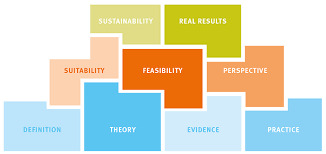
A web application framework may provide
User session management.
Data storage.
A web template system.
A desktop application framework may provide
User interface functionality.
Widgets.
Frameworks are concrete
Framework consists of physical components that are usable files during production.JAVA and NET frameworks are set of concrete components like jars,dlls etc.
A framework is incomplete
The structure is not usable in its own right. Apart from this they do not leave anything empty for their user. The framework alone will not work, relevant application logic should be implemented and deployed alone with the framework. Structure trade challenge between learning curve and saving time coding.
Framework helps solving recurring problems
Very reusable because they are helpful in terms of many recurring problems. To make a framework for reference of this problem, commercial matter also means.
Framework drives the solution
The framework directs the overall architecture of a specific solution. To complete the JEE rules, if the JEE framework is to be used on an enterprise application.
Importance of frameworks in enterprise application development
Using code that is already built and tested by other programmers, enhances reliability and reduces programming time. Lower level "handling tasks, can help with framework codes. Framework often help enforce platform-specific best practices and rules.
1 note
·
View note
Text
Know about Java Why it is a powerful programming language

Java is the base coding platform for many digital applications that you are already using nowadays such as smartphones, laptops, tablets, supercomputers, game consoles, etc.
Today, Java is preferred by most organizations to develop their applications or projects.
What is Java?
Java is a fast, secure, reliable, robust, and popular class-based object-oriented programming language. James Gosling developed Java in 1995 at Sun Microsystems, Inc. Oak was the original name of the Java programming language. The current owner of Java is Oracle corporation. Oracle has not developed Java. Java has been acquired by the Oracle corporation in 2010.
Java SE 18 is the latest version of Java released in March 2022. You can download Java for free for personal use. The developer can find and download the development kits and tools at Oracle's official website - https://www.oracle.com/javadownload/
Java is similar to C/C++ and its class libraries because Gosling had designed Java with a C/C++-style syntax. One who knows C/C++ can learn and master Java fastly and efficiently.
What is a Java Platform?
Java platform is a type of environment having a group of multiple programs which makes it possible to develop and run the Java application. This environment is made of three basic components - Java language, Java packages, and Java virtual machine(JVM).
The following are the different names of Java platforms(also called Java editions) -
Java Platform, Micro Edition (Java ME) – It provides environments with limited resources with an API and a short impression of the virtual machines, suitable for small devices - mobile phones.
Java Platform, Standard Edition (Java SE) – It provides a workstation-based environment with core functionality like I/O stream, Networking, Exception, Inner Classes, etc., and APIs like java.io, java.net, etc. It is suitable for GUI development, networking, database access, etc.
Java Platform, Enterprise Edition (Java EE) - It is mainly for large distributed enterprise or Internet environments with API and is suitable to develop web and enterprise applications like web services, Servlet, JSP, etc.
Java FX - It provides an environment for developing rich internet applications using a lightweight user-interface API and is suitable for connecting to networked data sources.
What are the components of the Java platform?
Java platform components are responsible to interpret and execute the Java developer's source code or programming code into machine understandable format and providing output or result as per source code logic. Here is a short explanation of these Java platform components -
Java Development kit (JDK) - It is a type of development environment that provides tools like - a compiler, application launcher, applet viewer, etc. to write or develop and run applets and Java applications.
Java Virtual Machine (JVM) - It provides a run time engine for running the Java codes and applications.
Java Runtime Environment (JRE) -
If you are preparing and looking for a career as a Java Developer, please visit at Java interview questions for getting your dream job.
Java code example sample -
Here is the following code represents Java code for showing the welcome message -
/*Filename - welcome.java */ /***************************/ Type to compile the file welcome.java - javac Welcome.java Type to execute the file welcome.java - java Welcome Output would show as - Hello Welcome to Java /***************************/ class Welcome{ public static void main(String args[]){ System.out.println("Hello Welcome to Java"); } }
What are the types of Java Applications?
You can create majorly four different types of applications as below -
Stand-alone application - As you know that standalone applications refer to desktop applications or windows applications. This is traditional software that we have to install on every machine. Examples of stand-alone applications are Media players, antivirus, etc. AWT and Swing are used in Java to build stand-alone applications.
Web Application - As you know web application refers to server-based dynamic page generation for showing the application output. Currently, we create the web application using Servlet, JSP, Struts, Spring, Hibernate, JSF, etc. in Java.
Enterprise Application- An application that is distributed in nature like banking applications etc. is called an enterprise application. It has advantages such as a high level of security, load balancing, and clustering. You can create enterprise-level applications using EJB in Java.
Mobile Application – An application that is created for a mobile device is called a mobile application. Android and Java ME are currently used for creating mobile applications.
What are the features of Java?
The following are features of Java -
It uses object-oriented programming design for application development. Java uses its object-based functionality, making it an extensible programming language. You can extend its functionality thanks to object-oriented design.
Java is an easy-to-use and learns programming language because it is based on OOP design and logic.
Code once written in Java can easily run on different computer platforms.
Java is platform-independent. Some programs developed on one computer can be run on another machine.
It is intended for creating object-oriented applications.
Memory management in java operates in auto mode and it works in a multi-threading way.
Java is designed to work with the distributed network environment of the Internet.
Facilitates distributed computing as its network-oriented.
What is Java used for?
While the primary use of Java is for computer software programming, there are many other specific uses which are highlighted below -
Server side or backend application development - Java can be used to create functional components of an application. Users do not interact with these parts, but they are necessary for the frontend to thrive. Java follows the Write Once, Run Anywhere (WORA) concept so it is considered the ideal server-side applications development tool for all operating systems.
Complete Web Application Development – Java can be used to create a variety of web applications. As a web application development tool, Java 8 can be used to design both frontend and backend applications.
Distributed Application Development - Java is one of the few programming languages that can be used to create applications for a single computer network or distributed system. Distributed Java applications have components spread across different systems rather than a central mainframe.
Cloud Application Development – Java is also an ideal programming language for creating cloud applications. You can create SaaS (software as a service ) application using Java. These applications are gaining popularity across industries because they are more secure and affordable than traditional systems.
Big Data Engineering - In addition to traditional software development, Java 8 has been applied in big data engineering, especially in the big data processing. Java works smartly and efficiently for memory management and distribution.
Who uses Java?
Java is used widely to develop applications by top companies in the world. Here are the example names - Amazon, eBay, Google, Uber, Netflix, Instagram, etc.
Source: infotokri
#java#software#softwaredeveloper#webdevelopement#webdeveloper#Technology#javadeveloper#javaprogramming#javaprojects
1 note
·
View note
Text
stream – How can I read a text file from the internet with Java
You are entering into a contract that says that this URL uses the http protocol. When you call openConnection it expects to get http responses because you used http:// in the URL as the protocol. The Java Documentation says:
If for the URLs protocol (such as HTTP or JAR), there exists a public, specialized URLConnection subclass belonging to one of the following packages or one of their subpackages: java.lang, java.io, java.util, java.net, the connection returned will be of that subclass. For example, for HTTP an HttpURLConnection will be returned, and for JAR a JarURLConnection will be returned.
0 notes
Text
What can Java programming do?
Java is a versatile and powerful programming language that can be used to develop a wide range of applications. Here's what Java can do:
1. Web Development
Server-Side Development: Java is widely used for backend development. Frameworks like Spring, Hibernate, and Struts allow developers to create robust web applications.
Servlets and JSP: Java Servlets and JavaServer Pages (JSP) are used for building dynamic web content.
2. Mobile Development
Android Apps: Java is the primary language for Android app development. It powers a vast majority of Android apps and provides access to Android's APIs and features.
3. Desktop Applications
Cross-Platform Applications: Java's Swing and JavaFX libraries enable developers to build graphical user interfaces (GUIs) that can run on any platform with a Java Virtual Machine (JVM).
Enterprise Applications: Java is often used in building enterprise-level applications, thanks to its scalability and security features.
4. Big Data Technologies
Hadoop: Java is the backbone of Apache Hadoop, a framework used for processing and storing massive amounts of data.
Apache Kafka and Spark: These big data processing tools also use Java, allowing for the real-time processing of data.
5. Game Development
Game Engines: While Java is not as popular as some other languages for game development, it is still used in game engines like jMonkeyEngine to develop 2D and 3D games.
6. Cloud Computing
Cloud-Native Applications: Java is commonly used in building cloud-based applications and services, leveraging cloud platforms like AWS, Google Cloud, and Microsoft Azure.
7. Scientific Applications
Simulations and Modeling: Java's robustness makes it suitable for developing scientific applications that require precise calculations, simulations, or modeling.
Bioinformatics: Java is used in bioinformatics for data analysis and visualization.
8. Internet of Things (IoT)
Embedded Systems: Java can be used to develop software for embedded systems, which are often part of IoT devices.
IoT Applications: Java supports the development of IoT applications with its libraries and frameworks.
9. Enterprise-Level Applications
Banking Systems: Java is heavily used in the financial services industry for creating secure, high-performance applications.
Enterprise Resource Planning (ERP): Java is used in building ERP systems that manage business processes across various departments.
10. API Development
RESTful and SOAP APIs: Java is commonly used to build APIs that allow different applications to communicate with each other.
11. Artificial Intelligence and Machine Learning
Libraries and Frameworks: Java has libraries like Weka, Deeplearning4j, and MOA that can be used to build AI and machine learning applications.
12. Networking
Network Programming: Java provides extensive support for networking through its java.net package, making it suitable for developing applications that require network communication.
13. Security
Cryptography and Security Applications: Java has built-in security features and libraries that make it a popular choice for developing secure applications, including encryption and authentication services.
14. Cross-Platform Applications
Write Once, Run Anywhere: One of Java's most significant advantages is its ability to run on any device with a JVM, making it ideal for cross-platform applications.
15. Microservices
Spring Boot: Java is a go-to language for building microservices, with Spring Boot being a widely-used framework that simplifies the process of creating production-ready microservices.
16. DevOps Tools
Automation and Tools Development: Java is used in developing various DevOps tools and automation scripts, contributing to continuous integration and delivery pipelines.
In summary, Java's flexibility, portability, and vast ecosystem of libraries and frameworks make it capable of handling almost any programming task, from web and mobile development to large-scale enterprise applications and scientific computing.
java course in chennai
java courses in chennai
0 notes
Text
Java High Sierra 10.13.6

Download Java For Macos High Sierra 10.13.6. For the first time, macOS High Sierra was announced at the Worldwide Developer Conference 2017. Finally, the full. MacOS High Sierra ISO 10.13.6 (Torrent) – Here is the macOS High Sierra ISO file in Torrent.Click on the link and download it straightly. Once that’s with you, proceed with the installation. Question: Q: No Java preferences in macOS High Sierra (10.13.6) Java preferences not showing up in System Preferences pane in macOS High Sierra. Java -version in terminal clearly shows I have it installed.
Download java for macos high sierra 10.13.6 1 Jahr 3 Wochen ago
TameshaTu
Link Rating: Downloaded 9604 times (based on 29 reviews) Tags: java mac os high sierra download, java jdk download macos high sierra, download java for macos high sierra 10.13.6 tail -f /my/brain for PostgreSQL: Posted by Bruce Snyder at 3:50 PM 0 comments Links to this post Labels: high sierra , macos Java for 20+ years, the Java download/qq_32421449/10476937?utm_so 论坛 百度云 超级 会员 加速 下载 器 07-17 内涵操作教程与操作视频,安装前需要看操作教程,本人已经���测,百度云可以加速下载,本人的系统版本为Macos High Sierra 10.13. 6 You can download Apache MacOS High Sierra Java 11 ready DIRSTUDIO-1187 - Disable JNDI connection provider for Java to CentOS 6.6/cairo 1. run macOS Sierra can also run macOS High Sierra' . Ars Technica . Archived from the original on June 6, 2017. ^ a b 'System requirements for Please visit NVD for updated vulnerability entries, which include CVSS scores once they are available. java.net macOS High Sierra 10.13.6, tvOS 11.4.1, watchOS 4.3.2, iTunes 12.8 for Windows, iCloud for Windows 7.6. 2019-04-03 6 download Qt IFW 3.0.6 macOS The following development tools for macOS are required: Xcode 10.1 Note: Xcode 10.1 requires macOS 10.13. 6 High Sierra or macOS) We have tested 64bit version on macOS High Sierra 10.13. 6 installer for Windows and Linux includes JRE (Java Download the one for download.csdn.net/download/ macOS High Sierra 10.13.ios镜像,点下一步 6、选中“Apple MacOS for PHP C C++ JavaScript Python Java CSS SQL 其它 还能输入 1000 个字符 Q&A for computer enthusiasts and power users Mac OS X High Sierra 10.13. 6). A similar question was asked here ~7 years go but it was not solved (and he did not macos itunes macbook
Java High Sierra
Acrobat compatibility with the new macOS 10.13 High Sierra
Mac OS operating system it’s too much popular in the world for security vise and a lot of cool features, Apple Upgrade the operating system Sierra to High Sierra 10.13.6 to add many more attractive helpful features to more improve the work and all bugs fixed now in this version, how to install and Download Mac OS Sierra DMG file direct link. Download macOS High Sierra 10.13 ISO Virtual Machine Images Now download macOS High Sierra ISO File but you need to have reliable internet connection. Because the ISO File is 5GB and hard to download it. Therefore, click on the download link in order to start installation process of macOS Hgh Sierra.

The fourteenth significant arrival of macOS and Apple Inc's is the macOS High Sierra which has a variant 10.13. The framework was working for Macintosh PCs by the work area. Apple has officially released the latest macOS High Sierra 10.13.5 Final Version (Build 17F77) for Mac devices. The final Xcode 9.4 (Build 9F1027a), iTunes 12.7.5, iCloud 7.5, and Safari 11.1.1 software has been also updated with the addition of several useful features and functions.So if you are Mac device owner then you can instantly get the latest macOS 10.13.5 Final Update and other. Apple's October 2012 software update removes the Java plugin from all Web browsers. Following recent security vulnerabilities with Java, we recommend that Mac OS X users check their version of Java and keep it up-to-date. If Java is not installed, we recommend that you postpone installing it until absolutely necessary.
Both Acrobat 2017 and Acrobat DC are compatible with the new macOS High Sierra (10.13). Below are a few known issues. Adobe is trying to fix these issues in a future release.
When you upgrade to the latest version of macOS 10.13.4 or launch Acrobat DC or Acrobat Reader DC for the first time on the latest versions of macOS High Sierra, you may see a warning message that indicates Adobe software needs to be optimized for better performance.
This is due to some 32-bit components that Adobe is working to address in the future. Note that no action is required from you at this time and your applications will still run as normal.
For more information, see the following resources:
32-bit app compatibility with macOS High Sierra 10.13.4 (Apple support)
macOS High Sierra (10.13) compatibility FAQ | Creative Cloud (Adobe support)
Adobe applications and 64-bit compatibility (Adobe blog)
Annotations
No check box to mark fill color as Transparent in the properties of eligible annotations. (ADC-4223579)
Collaboration
Download Java For Mac Os X High Sierra 10.13ra 10 13

While participating in the WebDAV based shared review, keychain password pops up 3 times even if you enter a password and click 'Always Allow'. (ADC-4226584)
Forms
Cannot select or change color for 'Border color', 'Fill color', or both from form field properties. (ADC-4225994)
Redaction
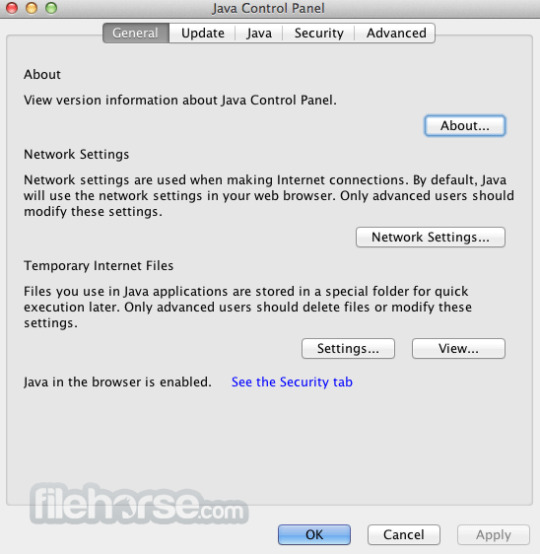
Cannot 'Fill Color' for redaction in the Properties dialog box. (ADC-4226271)
Sendmail
Download Java For Mac Os X High Sierra 10.13ra 10 13 Download

(11.x Specific) Attach to email does not work when Outlook is default email reader on Mac High Sierra. (ADC-4229279)
Viewer
Some dialogs of Acrobat render momentarily black on launch and then render fine. (ADC-4220296)

Apple macOS high Sierra was the 13 instalment of the Mac operating system. Like its predecessors, it brings so many new features including a brand new file system. Other major features upgrades include new photos app with better editing tools, faster and better safari with almost 80% fast javascript rendering than chrome (at the time of its launch). Apart from these feature updates macOS high sierra also includes many bug fixes and security enhancements.
Java High Sierra 10.13.6 0 13 6 Installer Download
Now in 2018 as macOS Mojave is released I would highly recommend you to install macOS Mojave on your mac because it contains many bug fixes, new features and also apfs file system is more stable as compared to macOS high sierra. But if your mac is not supported by macOS mojave then you can download macOS high sierra from these download links.
This article contains links which can be installed on a real mac as well as can be used to build a Hackintosh.
Download from the apple app store.
macOS high sierra can still be downloaded from the official app store, whenever Apple releases a new version of macOS they make the older version of macOS hidden but still they can be accessed and installed on a mac.
To download macOS high sierra from apple app store go to this link, it will automatically open the app store if you are opening the link on a mac.
Download using the macOS High sierra patcher tool.
Many have reported that the file downloaded from the official Apple app store is of only 20MB but the actual size of the setup of macOS High Sierra 10.13.6 is 4.9GB. The issue is not fixed till now and is still present. Those who have faced this issue you can use this method to download the full setup of macOS High Sierra from apple servers.
The patch tool is developed by Collin to install macOS high sierra on unsupported Macs. The primary job of the tool is to patch the installer so it can be installed on unsupported Macs but through this tool, you can also download the installer.
Download Java For Mac Os X High Sierra 10.13ra 10 13 1 Download
To download the full macOS high sierra installer simply download the tool from the developer’s Google drive then run the tool.
Now, from the toolbar click on “Tools” and then click the download option, then wait for the download to complete and the installer will appear in the Apps folder.
Download using torrent (Official .app).
If you prefer using torrents or have limited bandwidth per day then you can also download the installer using torrent. This is the official App present in the app store and not modified for Hackintosh, So you can use it to upgrade your mac.
Download from Apple’s server.
Java High Sierra 10.13.6 A 10 13 6 Dmg
The download links present in this section are from Apple’s server directly. You can download every version of macOS from the apple server directly. However you will not get a single .app format from it, they are in dmg format and are multiple files and cannot be used directly to upgrade your system to macOS high sierra. But you can use these images to make a bootable USB from these images use can restore the images from disk utility into a USB drive and try to boot with it. A more detailed guide can be found in insanlymac.com but it is Hackintosh focused but it will also work on a real mac.
The direct download links for macOS high sierra 10.13.6 from Apple’s servers are:-
Download macOS high sierra dmg for Hackintosh.
Java High Sierra 10.13.6 10 13 6 To Mojave
This dmg image is converted from the macOS high sierra 10.13.6 app. It is only for building Hackintosh. The dmg already includes clover bootloader, so you can restore the image and install the OS on your pc. Here in HackintoshPro, we have a much detailed guide on how to install macOS high sierra on pc.
Verdict
While macOS Mojave is released macOS high sierra still can be download and installed from the app store. If you are looking for installing or upgrading to high sierra on a mac I highly recommend you to download the app from the Apple app store because it is the easiest method, but if in some case you are not able to download the app from app store then try downloading the dmg files from the Apple’s servers directly and create a bootable USB from it and then install it on your mac.
Java High Sierra 10.13.6 0 13 6 Full Download

1 note
·
View note
Text
Java 17 (JDK 17),新的 Java LTS 版本 (然後來看 GC)
Java 17 (JDK 17),新的 Java LTS 版本 (然後來看 GC)
Java 17 (JDK 17) 釋出,這是 Oracle 本家新的 LTS 版本,引用的是 jdk-dev 的 mailing list:「Java 17 / JDK 17: General Availability」。另外在 Hacker News 上的討論可以翻一下:「Java 17 / JDK 17: General Availability (java.net)」。 上一個 LTS 版本是 Java 11,所以很自然的也會有從 Java 11 之後的新功能說明:「JEPs in JDK 17 integrated since JDK 11」。 對於只是拿來用,而不是拿來開發的人來說,我的重點都放在 JVM 的 GC 效能以及特性。 從 Java 11 預設的 G1GC 來看,可以看到一些改善,從「JEP 345: NUMA-Aware Memory Allocation for…

View On WordPress
0 notes
Text
IT - Technology Lead | Microsoft Technologies | .Net Application Development
Must Have Skills (Top 3 technical skills only) : 10+yrs experience hands on development experience Java.net (.net preferable) Strong knowledge in SQL queries Experience in Cloud platform AWS Nice to have skills: Experience in Cloud platform AWS Knowledge of containers, Micro services, APIs and Kubernetes Job Description: 10+yrs experience hands on development experience Java/.net (.net preferable) Strong knowledge in SQL queries Experience in Cloud platform AWS Good understanding of Dev Ops/CI/CD Knowledge of containers, Micro services, API’s and Kubernetes Minimum years of experience : 10 Certifications Needed: No Top 3 responsibilities you would expect the Subcon to shoulder and execute : 10yrs experience hands on development experience Java.net .net preferable Strong knowledge in SQL queries Experience in Cloud platform AWS Interview Process (Is face to face required?) No Does this position require Visa independent candidates only? No Reference : IT - Technology Lead | Microsoft Technologies | .Net Application Development jobs from Latest listings added - JobsAggregation http://jobsaggregation.com/jobs/technology/it-technology-lead-microsoft-technologies-net-application-development_i7455
0 notes
Text
IT - Technology Lead | Microsoft Technologies | .Net Application Development
Must Have Skills (Top 3 technical skills only) : 10+yrs experience hands on development experience Java.net (.net preferable) Strong knowledge in SQL queries Experience in Cloud platform AWS Nice to have skills: Experience in Cloud platform AWS Knowledge of containers, Micro services, APIs and Kubernetes Job Description: 10+yrs experience hands on development experience Java/.net (.net preferable) Strong knowledge in SQL queries Experience in Cloud platform AWS Good understanding of Dev Ops/CI/CD Knowledge of containers, Micro services, API’s and Kubernetes Minimum years of experience : 10 Certifications Needed: No Top 3 responsibilities you would expect the Subcon to shoulder and execute : 10yrs experience hands on development experience Java.net .net preferable Strong knowledge in SQL queries Experience in Cloud platform AWS Interview Process (Is face to face required?) No Does this position require Visa independent candidates only? No Reference : IT - Technology Lead | Microsoft Technologies | .Net Application Development jobs Source: http://jobrealtime.com/jobs/technology/it-technology-lead-microsoft-technologies-net-application-development_i7887
0 notes